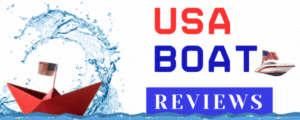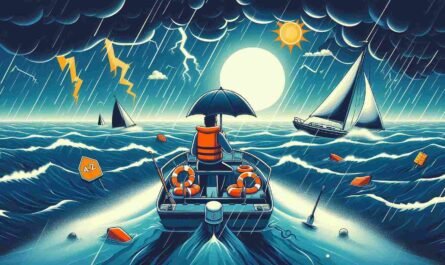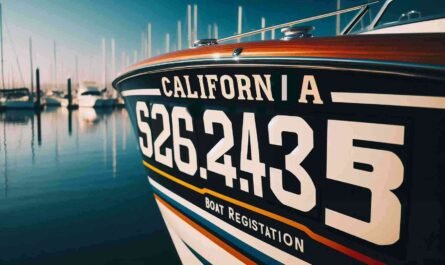Essential Boating Safety Equipment Required in California Waters
Heading out on the water for a day of sun and sea in California sounds like a dream, right? But whether you’re planning to cruise the coast or explore one of the state’s scenic lakes, there’s something you can’t overlook — safety.
California has specific boating safety equipment requirements that every boat operator must follow. Not only will these items keep you and your passengers protected, but having them on board also helps you avoid penalties and fines. So, before you fire up the engine, let’s dive into what you need to have on board!
Why Boating Safety Equipment Matters
Imagine this: you’re ten miles from the shore, enjoying the salty breeze, and suddenly your boat engine stalls. Or maybe a fog rolls in and you lose visibility. These situations may not be common, but when they happen, having the right safety equipment can truly be a lifesaver.
Whether you’re new to boating or a seasoned mariner, think of safety gear like a seatbelt — it may not feel essential… until it is.
California Boating Equipment Requirements — What You Must Have
If you’re boating in California waters, state and federal laws require your vessel to carry specific safety gear. Most of these rules depend on the size and type of boat, so let’s break them down into easy-to-understand categories.
1. Life Jackets (Personal Flotation Devices – PFDs)
This one’s simple but crucial. Every person on board needs access to a U.S. Coast Guard-approved life jacket.
Here’s what California law requires:
- One wearable life jacket per person on board.
- Children under 13 must wear theirs at all times while on a moving vessel.
- Boats over 16 feet long must also carry a throwable flotation device (like a ring buoy or cushion).
And it’s not just about having them — make sure your life jackets fit properly and are in good condition. A moldy, torn, or waterlogged vest won’t do much in an emergency.
2. Fire Extinguishers
Think boat fires are rare? Think again. Fuel leaks, electrical faults, and even cooking accidents can spark a blaze.
The rules depend on your boat’s size and fuel system:
- Boats with enclosed engine compartments or using fuel must carry a marine-rated fire extinguisher.
- Smaller boats (under 26 feet) usually need just one extinguisher.
- Larger boats may need two or more, and they should be easily accessible.
Also, take a few seconds to check the gauge every trip. A discharged extinguisher won’t help when you actually need it.
3. Sound-Producing Devices
Ever been caught in the fog or tried to attract attention out at sea? This is where sound devices come in. California law requires each recreational boat to have a way to make an “effective” sound signal:
- Whistle, air horn, or bell are all acceptable options.
- For boats over 39.4 feet, both a bell and a whistle are required.
And yes, your voice doesn’t count — get yourself a whistle or compressed air horn instead.
4. Visual Distress Signals (VDS)
If you boat on coastal waters, the ocean, or Great Lakes, you’re legally required to carry visual distress signals.
Here’s what that typically includes:
- At least three day-use and three night-use distress signals (like flares, flags, or smoke devices).
- An orange flag for daytime and red flares for nighttime are commonly used.
But there’s an exception — if you’re only on inland waters or lakes, VDS may not be required. Always check with local authorities before heading out.
5. Navigation Lights
Planning to be on the water after sunset? Your boat must be equipped with functioning navigation lights:
- Red and green sidelights and a white stern light.
- When anchored at night, display a white all-around light so other vessels can see you.
Even if it’s just a short sunset cruise, lights are non-negotiable. They help prevent accidents in low-visibility situations.
6. Backfire Flame Arrestor and Ventilation (for gasoline engines)
For gasoline-powered boats, safety goes beyond what you can see. These hidden systems help prevent explosions:
- Backfire flame arrestors prevent engine combustion from igniting fuel vapors.
- Ventilation systems help remove gas fumes from the engine area on older boats.
Newer vessels are usually built to meet these specs, but be sure to inspect older boats.
Recommended (But Not Required) Safety Gear
While the law only mandates the essentials above, there are a few smart extras every boater should have:
- Anchor and line – Helps you stay in place if your engine dies or you want to stop safely.
- First aid kit – Cuts, scrapes, or motion sickness can all happen onboard.
- VHF marine radio – Cell service isn’t reliable on the water.
- Tool kit and spare parts – Especially for longer trips or older boats.
- Drinking water and snacks – Because no one likes being stranded and hungry!
Keep Your Gear in Good Shape
Having the right equipment is step one. Keeping it in working order is step two.
Ask yourself:
– Are the life jackets mold-free and ready to wear?
– Is the fire extinguisher full and within its expiry date?
– Do your navigation lights work?
– Are your distress signals expired?
Regular checks — even once a month during boating season — can make all the difference in an emergency.
Final Thoughts: Safe Boating = Smart Boating
Boating in California offers breathtaking views and unforgettable adventures, but safety should always ride shotgun. Following the state’s boating safety equipment rules isn’t just about compliance — it’s about protecting friends, family, and yourself when you’re out on the water.
Think of every piece of equipment as a little insurance policy. You hope you never need it, but if things go sideways, you’ll be glad it’s there.
So, before your next voyage, take the time to review your safety checklist. Ask yourself, “Do I have everything I might need today — not just what’s required by law, but what would help me stay safe no matter what happens?”
Pack smart, boat safe, and enjoy all that California’s beautiful waters have to offer!
Ready to learn more?
Check out our other posts on boating rules, tips, and safety basics to make every outing smooth and secure.







